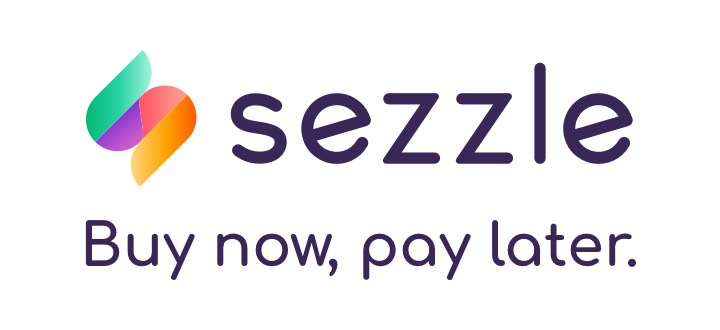Lexapro vs. Cymbalta: What You Need to Know
Category: Prescription Related Questions
Author Scott
Posted on December 7, 2023
Scott is passionate about health and wellness, and enjoys writing on various topic surrounding these fields. Scott lives in Seattle and spends his free time restoring old furniture and playing pickleball with his friends.

More than 17 million American adults and nearly two million children in the US suffer from major depressive disorder (MDD). The good news is that 80% of these people see symptom improvements after four to six weeks of treatment.
Treating depression may require antidepressant medication, therapy, or a combination of the two. The antidepressant a doctor prescribes will depend on various factors like the person's symptoms and pre-existing health conditions.
Lexapro and Cymbalta are among the most commonly prescribed brand-name antidepressants. However, there are essential differences between these prescription medications.
This post will compare and contrast Lexapro vs. Cymbalta for MDD and other conditions they treat. Read on to learn about the side effects, benefits, and costs of these antidepressant drugs.
What Is Lexapro?
Lexapro is a selective serotonin reuptake inhibitor (SSRI) that contains the active ingredient escitalopram. Like all SSRIs, this medication works by increasing levels of serotonin in the brain.
Serotonin is a neurotransmitter, a chemical that exchanges messages between brain cells. It helps with bodily processes like sleep, digestion, bone health, libido, wound healing, and blood clotting.
In the brain, serotonin is heavily involved in regulating mood. Decreased serotonin levels are associated with low mood, while increased serotonin levels generally correlate with a good mood.
Lexapro Uses
Doctors primarily prescribe Lexapro to adults and children with MDD, but it has other uses. For example, it is helpful for generalized anxiety disorder (GAD) and irritable bowel syndrome (IBS) symptoms.
Lexapro also has off-label uses, including:
- Binge eating disorders
- Bulimia nervosa
- Obsessive-compulsive disorder (OCD)
- Panic disorder
- Post-traumatic stress disorder (PTSD)
- Premenstrual dysphoric disorder (PMDD)
- Premature ejaculation
Off-label use means Lexapro is not FDA-approved to treat certain conditions but may benefit them anyway.
Lexapro Dosage
Lexapro comes in oral tablet form. It is also available as a drinkable solution. Doctors generally prescribe 10 milligrams once daily to people with MDD or GAD, though it also comes in a lower (5 mg) and higher (20 mg) strength.
Lexapro Side Effects
Side effects are uncommon when taking Lexapro. When people do experience negative symptoms from taking this medication, the most common ones are:
- Diarrhea (8% of people)
- Drowsiness (6% of people)
- Nausea (5% of people)
- Dry mouth (5% of people)
- Sweating (5% of people)
- Constipation (3% of people)
- Stomach upset (3% of people)
- Decreased appetite (3% of people)
- Decreased libido (2% of people)
These symptoms typically go away with time. If they do not, contact your doctor about switching to a different medication like Cymbalta.
What Is Cymbalta?
Cymbalta is a selective serotonin-norepinephrine reuptake inhibitor (SNRI) that contains the active ingredient duloxetine. SNRIs work by increasing levels of serotonin and norepinephrine in the brain.
Like serotonin, norepinephrine is a neurotransmitter. In the body, it regulates blood vessel constriction and blood pressure, especially during stress. It also controls mental health symptoms like alertness, arousal, attention, and mood.
Some experts believe that norepinephrine is linked to mood in the same way as serotonin. When norepinephrine levels in the brain increase, the mood is elevated; when norepinephrine levels decline, mood does, too.
Cymbalta Uses
Cymbalta is a treatment for adult and childhood MDD, but it is also FDA-approved to treat generalized anxiety disorder and IBS. Other conditions doctors prescribe Cymbalta for include:
- Fibromyalgia
- Chronic musculoskeletal pain
- Neuropathic pain from diabetes mellitus
Some doctors also prescribe Cymbalta for off-label use to treat chemotherapy-induced peripheral neuropathy and stress urinary incontinence in men.
Cymbalta Dosage
Cymbalta is a delayed-release oral capsule. It comes in 20, 30, and 60-milligram strengths. Doctors typically prescribe 40 mg to 60 mg once daily for people with MDD and GAD.
Cymbalta Side Effects
Nearly one in four people taking Cymbalta experience its most common side effect: nausea. There is also a moderate chance of the following symptoms:
- Headache (14% of people)
- Dry mouth (13% of people)
- Drowsiness (10% of people)
- Diarrhea (9% of people)
- Constipation (9% of people)
- Dizziness (9% of people)
- Decreased appetite (7% of people)
- Sweating (6% of people)
- Increased blood pressure (2% of people)
10% to 20% of people taking Cymbalta switch to another antidepressant. The most common reason why people stop using this drug is its side effects.
Lexapro vs. Cymbalta: Which Is Right for You?
It is ultimately up to your doctor to determine which antidepressant is best for your symptoms and health history. Still, you may want to understand the pros and cons of each so you can help inform your doctor's decision.
Lexapro Has a Better Adherence Rate
Cymbalta has a relatively high dropout rate due to its higher risk of side effects. More people can tolerate Lexapro for longer, which may be why studies have found it to be more effective than Cymbalta.
Cymbalta Has a Higher Risk of Side Effects
Studies have compared duloxetine-containing antidepressants like Cymbalta against other MDD treatments. Cymbalta has no apparent benefit over other antidepressants. Moreover, it has an increased rate of side effects that turn many people off from taking it in the long term.
Lexapro Is Not Approved for Use in Children Under 12
Lexapro and Cymbalta can both be prescribed to children. However, Lexapro is only approved for children aged 12 and older. Cymbalta can be prescribed to children as young as 7.
Cymbalta Has Fewer Drug Interactions
Cymbalta and Lexapro interact with many different types of drugs, meaning taking these substances together can increase the risk of adverse events. However, Cymbalta interacts with fewer drugs compared to Lexapro.
Lexapro Is Less Expensive
Lexapro costs around $260 for a 30-day supply of 20 mg tablets. Cymbalta is more expensive, costing around $390 for a 30-day supply of 30 mg delayed-release capsules.
Both drugs are also available in generic form, which can lower the total cost of your prescription.
Get These Prescription Medications at PricePro Pharmacy
Lexapro and Cymbalta are commonly prescribed medications for major depressive disorder, generalized anxiety, and other conditions. When comparing Lexapro vs. Cymbalta, Lexapro comes out on top in terms of cost, the risk of side effects, and effectiveness.
Are you searching for ways to lower the cost of your antidepressant prescription medication? PricePro Pharmacy connects patients with the lowest-cost brand-name and generic drugs available on the market.
Upload your prescription with PricePro Pharmacy and see how much you can save!
Works Cited
https://www.dbsalliance.org/education/depression/statistics/
https://www.ncbi.nlm.nih.gov/books/NBK28257/
https://www.pricepropharmacy.com/types-of-anxiety-medication-what-you-need-to-know/
https://www.pricepropharmacy.com/understanding-the-new-diabetes-guidelines/
https://www.ncbi.nlm.nih.gov/pmc/articles/PMC7644852/
https://pubmed.ncbi.nlm.nih.gov/17559755/
https://pubmed.ncbi.nlm.nih.gov/23076926/



